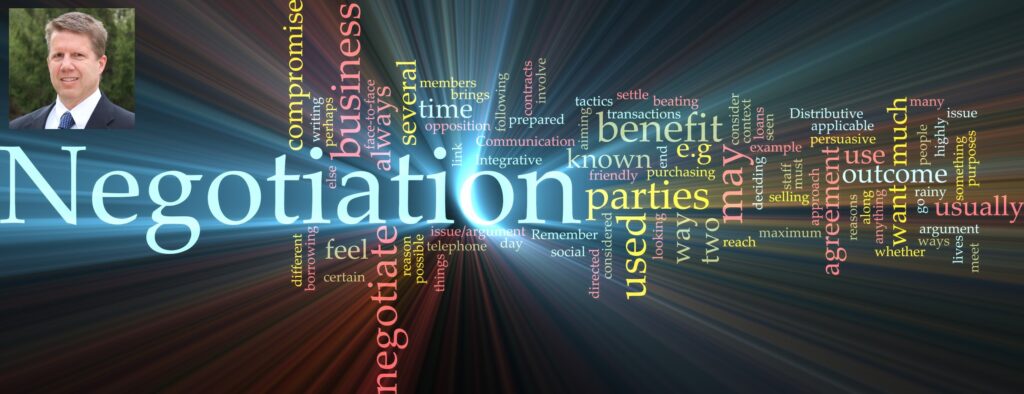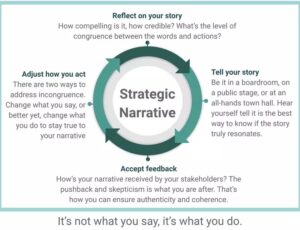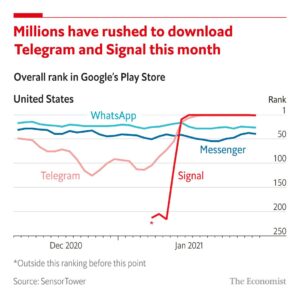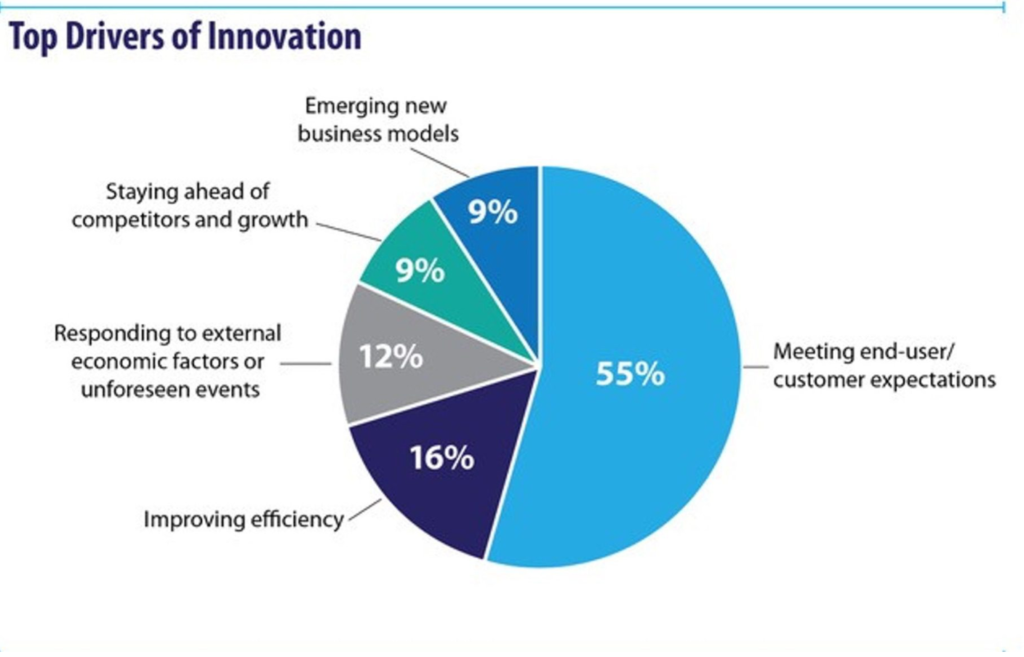
Implementing lessons from The Innovator’s Dilemma (Clayton Christensen, 1997) and Blue Ocean Strategy (W Chan Kim and Renee Mauborgne, 2004) is still a challenge for many companies today. Despite its groundbreaking insights into disruptive innovation, only 9% of corporate innovation is directed towards truly disruptive technologies as illustrated by this graph. Instead, most innovation efforts – 91% – are focused on incremental improvements to existing products and services, essentially “sailing faster in red oceans.” But is this conventional approach the best solution to the innovator’s dilemma?
The siren call of steady, incremental progress can be tempting, but it fails to address an underlying root cause of the innovator’s dilemma: the difficulty of balancing short-term performance with long-term success. In the quest for delivering an exceptional customer experience and building closer customer relationships, companies often become fixated on meeting current wants and needs. But by solely focusing on these incremental improvements, they run the risk of stifling true innovation and limiting themselves to moving on the same product or market S-Curve (product/technology life cycle curve). Worse still, they may push disruptive technologies onto customers who simply don’t understand or need them.
As a result, many companies find themselves waiting for product and service markets to cross the chasm into the more profitable majority markets before taking the leap into disruptive technologies and markets. This passive approach, however, is a missed opportunity.
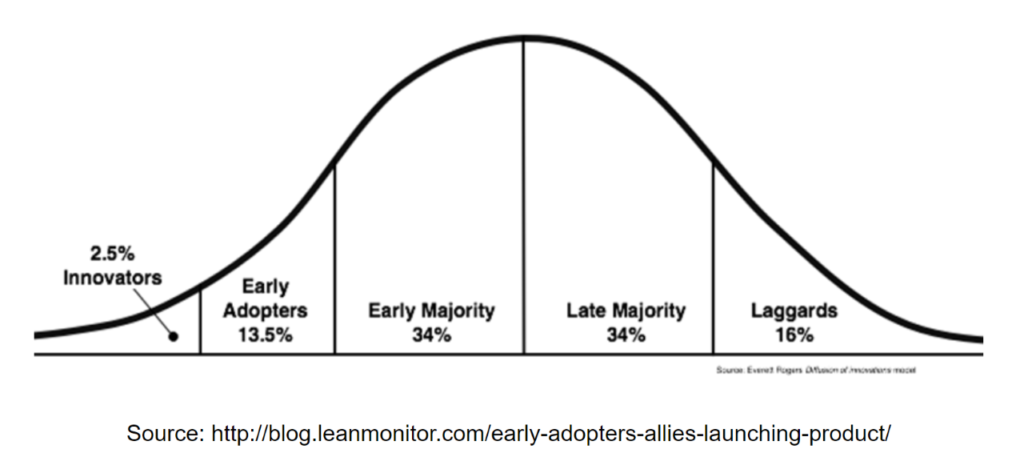
The companies that are leading the way in innovation are those that have embraced the lessons of The Innovator’s Dilemma and are sailing boldly into the uncharted and lonely waters of blue oceans. Transforming product offerings and disrupting business models to create entirely new and differentiated offerings that satisfy unmet needs and solve real problems, not only builds better customer relationships but also gains a competitive advantage in the market along with the potential for supercharged profits.
The Potential Effect of Microsoft & Open AI Chat GPT
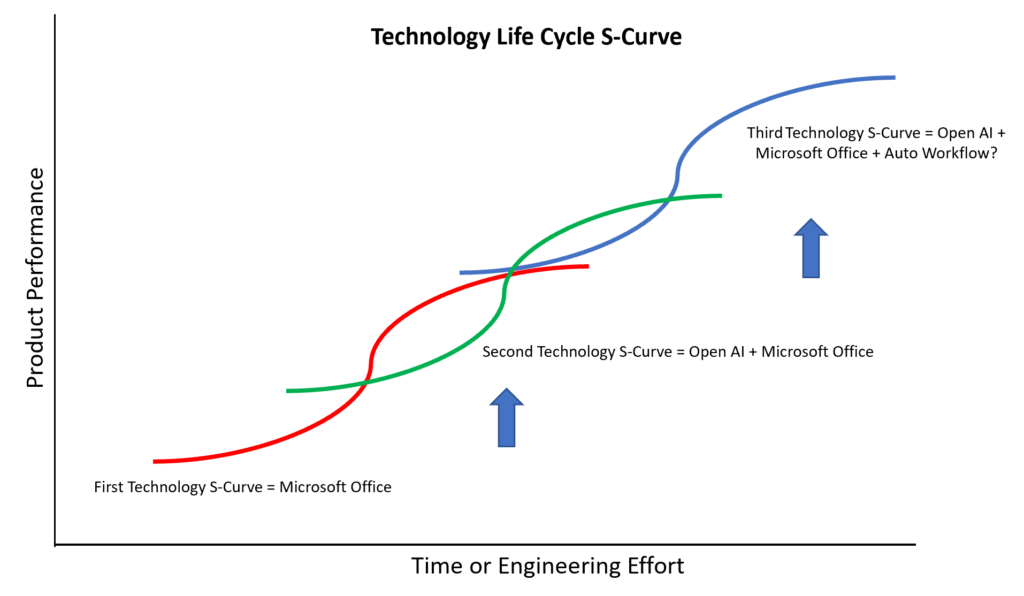
Microsoft offers a compelling example. With an initial investment of $1B in Open AI, followed recently by a larger investment of $10B, Microsoft created an option to integrate AI into its products/applications. Microsoft is not just incrementally improving its offerings on the existing product S-Curve. Instead, it’s jumping to a new product S-Curve by applying disruptive technology to some of the most popular and effective software solutions on the market. The AI-enhanced applications could offer opportunities for improved productivity and ease of use for its customers and simultaneously position Microsoft as a leader in the AI space – in a seemingly accelerated response, Google is internally testing one of its AI solutions, Apprentice Bard.
The question is, leading into a recession, can you follow Microsoft’s path of investing boldly in disruptive experiments as calibrated bets at the potential expense of short-term performance? The exclusive payoff is finding the long-term success afforded by shifting up to new product S-Curves and blue oceans for your product or services! #createvaluethatmatters




